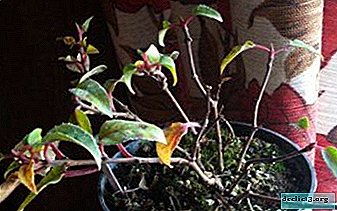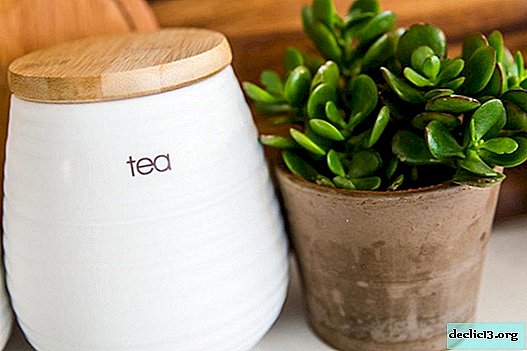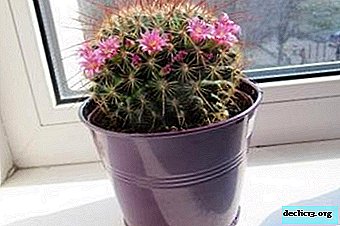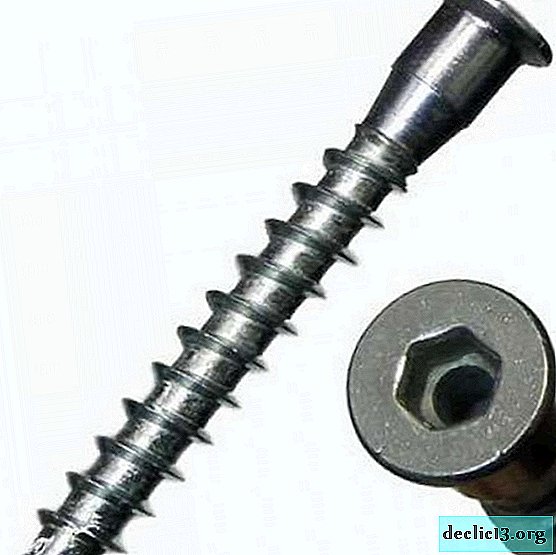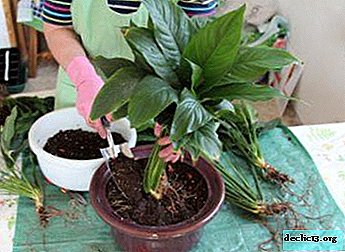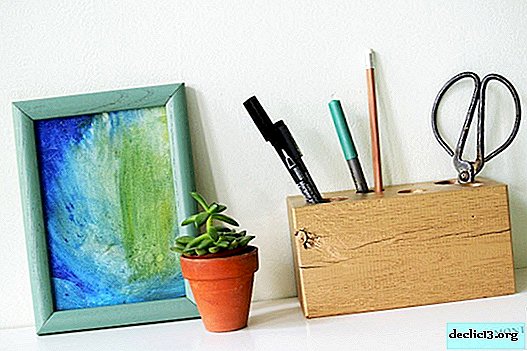Step-by-step instructions on how to propagate a Chinese rose at home

The Chinese rose is a guest from sub- and tropical regions of the Earth. In Malaysia, it is a symbol of the country, and in Russia it is a favorite plant of flower growers because of its unpretentiousness. It is grown in gardens and greenhouses, in apartments and on the balcony.
The lushly blooming Chinese rose has long won the love of flower growers for its vivid beauty, abundant long-term flowering and ease of cultivation. This popular houseplant is one of 250 species of hibiscus, an evergreen shrub that can reach a height of six meters in natural conditions!
Is it easy to propagate it at home? What breeding methods are popular?
Choosing the Right Way
- Seed propagation.
- Cuttings.
- Reproduction by layering.
- Division of the bush.
A suitable method of reproduction is selected based on:
- type of plant;
- his age;
- state;
- season.
The optimal time for the procedure
 The plant is propagated to get another one for decorating the windowsill, if:
The plant is propagated to get another one for decorating the windowsill, if:
- It is great.
- One of its branches bent close to the ground, which makes it possible to reproduce by layering.
- It has grown enough to divide the bush or cut the stalk.
When choosing a suitable breeding method for a Chinese rose, they focus primarily on the time of year. In other cases, reproduction is abandoned until better times.
This is especially true of cases when the grower, seeing spots on the leaves and noticing small insects, still cuts the stalk and tries to propagate it. His efforts will not succeed. First you need to treat it, wait for a full recovery, and then propagate it.
How to propagate a flower at home?
To breed hibiscus, use:
- seeds;
- share a bush;
- carry out cuttings;
- dig one of the stems.
Below is a step-by-step instruction for each method.
Cuttings
Cuttings - the only way to reproduce hibiscus, which allows it to breed all year round. Better accepted cuttings in the spring and summer.
- The mother plant is watered, and then pruned (for more information on recommendations on when and how to prune a Chinese rose, see here).
- Along with cutting off ugly processes, cuttings are cut - branches with a strong green stem and 2-3 internodes on it.
- The lower leaves are torn off to prevent decay.
- Selected cuttings are rooted in water or in soil.
Layering
The method when one of the stems is dug up is called laying of layering. It is applicable to Chinese rose. During propagation, layering is used:
- air;
- ordinary;
- vertical.
More often, flower growers use conventional layering, as this method reduces damage to the parent plant. Choose a branch that is sprinkled with earth, leaving the top untouched. In the place where the shoot is sprinkled with earth, roots appear.
The ideal time for hibiscus to breed by layering is the beginning of spring. A prerequisite when choosing a suitable shoot: it must be located above the surface or shallow in it. Before propagating the plant in this way, prepare the soil. They dig it up as deep as possible. After digging, peat and sand are poured.
Attention! In order to propagate hibiscus by layering, the soil must have good water-holding ability, a drainage layer and an air regime.- The shoot, which they are going to bend, is freed from the leaves.
- Lay on the bottom of the groove dug in advance. If it is unbent, fix it with wire brackets, and then sprinkle it with earth and water it.
- In order for the layering to produce roots faster, watering should be regular, as the soil dries in the pot.
- In early autumn, layering is separated from the parent plant.
- After 2-3 weeks, the upper shoots are trimmed so that the root system develops well in the new plant.
Seeds
Seed propagation of a Chinese rose is a less common and unpopular method, as it is ineffective. Propagating it with seeds, gardeners are faced with a complete loss of varietal characteristics of the plant. How to act for those who want to propagate this way hibiscus in late winter - early spring?
 The seeds are soaked in water, in which the growth stimulants Epin, Humate, Zircon, etc. are dissolved. Duration of soaking - 1-2 days. During the soaking, mix the seeds in the solution 2-3 times.
The seeds are soaked in water, in which the growth stimulants Epin, Humate, Zircon, etc. are dissolved. Duration of soaking - 1-2 days. During the soaking, mix the seeds in the solution 2-3 times.- After soaking, they begin to germinate the seeds. To do this, take a wet cotton towel, on which they are laid out, and then wrap it in a plastic bag.
- After 2-3 days, roots will appear on the seeds. They are planted in previously prepared containers with soil (1 hour each of peat, ash, sheet soil and sand). Seeds are not buried, watered and covered with a glass or plastic bag on top of the container to create a greenhouse effect.
- After 1-2 weeks, seedlings appear (the glass is removed), which is watered sparingly to prevent root decay.
- After 2-3 months, the young plant is transplanted into a pot of small diameter.
More details on how to grow hibiscus from seeds at home can be found in this material.
Dividing the bush
This method is used to breed hibiscus in the spring. - I half of April. The best time is until young shoots have emerged from the kidneys of substitution.
Reference! Bushes of Chinese roses, which last season had 2 or more stems, are propagated by division.When dividing the bush you will need:
- knife;
- pruner or saw.
Before use, the blade is treated with an alcohol-based solution for disinfection.
- Digging a bush. Clearing the rhizome from the ground. No root damage;
- Separation from the bush of trunks so that each has a few roots. For better separation, use a knife. Sometimes 2-3 bushes are separated at a time, since the bush is large.
- Trimming the soaked parts of the roots and planting trunks in pots with the ground. In order for them to better take root, they sprinkle compost or humus-rape in them.
- Watering is private, but moderate.
When if the grower cannot plant the delenka into the ground, he must water it, put it in a plastic bag and put it in storage 1-2 weeks in an unheated room.
How to root?
There are 2 ways to root a propagated plant - in water or in soil.
In the soil
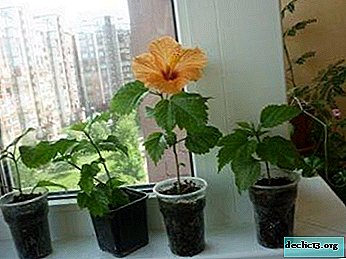 Before planting hibiscus in a pot with nutritious soil, wait until strong roots appear on the cuttings.
Before planting hibiscus in a pot with nutritious soil, wait until strong roots appear on the cuttings.- To do this, plant them in a glass, which is 1/3 filled with soil (2 parts of leaf soil and 1 part of peat and sand).
- Before planting, each stalk is dipped in heteroauxin powder.
- After planting, the soil is sprinkled, and rammed around it.
A hibiscus cuticle gives roots on a 25-30 day. Rapid root formation is provided to those who make a mini-greenhouse or a hotbed from improvised means. Using a mini-greenhouse, they maintain high humidity and temperature in the region of 22-25 ° C.
In water
- To root the cuttings in water, a container of dark glass is taken.
- Warm, but settled water is poured into it.
- 2 tablets of activated charcoal are added to it, a few drops of fertilizer are dripped so that the stalk receives the proper nutrition during root formation.
- The capacity is set on a well-lit, but not in direct sunlight, window sill.
Possible problems and difficulties
After propagation, the Chinese rose needs care. It should be regularly watered, monitor air humidity and the absence of drafts. Sometimes the lack of proper care leads to the dropping of foliage by a young plant.
So that aphids and spider mites do not appear, they treat seedlings with special preparations, wash the stems and leaves under a warm shower, or wipe them with soapy water. If hibiscus leaves turn yellow after reproduction, it lacks iron and nitrogen, but chlorine and calcium are too much.
Follow-up care
After propagation, hibiscus is looked after in the same way as an adult plant. When young shoots appear, the old dried ones are removed. The soil near it is loosened, and weeds are pulled out. In the period of active growth, i.e. from June to September, they feed it with fertilizers with a high content of phosphorus and nitrogen twice a month, and in autumn, in addition to phosphorus fertilizers, they add potash to prepare the plant for winter. The Chinese rose is watered as the soil is completely dry.
You can find out more about the features of caring for a Chinese rose at home here.
Conclusion
Even beginners in floriculture do not have difficulties in propagating the Chinese rose. This plant, in which flowers live only a day, is often propagated by cuttings or layering. Providing the necessary care during and after propagation, a healthy flower is obtained.

 The seeds are soaked in water, in which the growth stimulants Epin, Humate, Zircon, etc. are dissolved. Duration of soaking - 1-2 days. During the soaking, mix the seeds in the solution 2-3 times.
The seeds are soaked in water, in which the growth stimulants Epin, Humate, Zircon, etc. are dissolved. Duration of soaking - 1-2 days. During the soaking, mix the seeds in the solution 2-3 times. Before planting hibiscus in a pot with nutritious soil, wait until strong roots appear on the cuttings.
Before planting hibiscus in a pot with nutritious soil, wait until strong roots appear on the cuttings.

